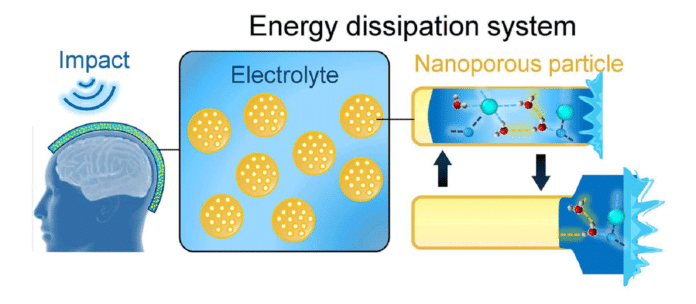A UVA engineer has made a groundbreaking innovation in safety cushioning with the development of a liquid-based technology. This liquid safety cushioning technology can potentially revolutionize safety measures across various industries. By harnessing the unique properties of a specially formulated liquid substance, the engineer has created a solution that enhances protection while maintaining usability and comfort.
The technology has shown promising results in reducing the risk of injuries by effectively absorbing and dispersing impact energy. With its versatility and customizable nature, this innovation has vast applications in transportation, sports, and industrial environments, paving the way for a safer future.
Football players facing the risk of permanent brain damage due to head hits have led to a race for improved head protection. Nanofoam, the material found inside football helmets, has received a significant upgrade thanks to the work of mechanical and aerospace engineering associate professor BAOXING XU and his research team at the University of Virginia. Integrating nanofoam with a specially designed “non-wetting ionized liquid” has created a liquid cushion that enhances athlete protection.
This breakthrough has the potential to benefit not only sports equipment but also car occupants and hospital patients using wearable medical devices. The team’s research, recently published in ADVANCED MATERIALS, addresses the need for a material that can withstand multiple impacts while providing both cushioning and resilience. Their previous work, published in the PROCEEDINGS OF THE NATIONAL ACADEMY OF SCIENCES, explored using liquids in nanofoam to meet the complex safety requirements of high-contact sports.
Xu said, “We found out that creating a liquid nanofoam cushion with ionized water instead of regular water made a significant difference in how the material performed. Using ionized water in the design is a breakthrough because we uncovered an unusual liquid-ion coordination network, making it possible to create a more sophisticated material.”
The liquid nanofoam cushion, developed by Professor BAOXING XU and his research team, offers superior impact dispersion and head protection inside helmets. The cushion compresses upon impact, minimizing the force transmitted to the head and reducing injury risk. After each hit, it regains its original shape, ensuring the helmet’s ongoing effectiveness. The enhanced material is also more flexible and comfortable, dynamically responding to external jolts.
This innovation opens possibilities for lighter, smaller, and safer protective devices, revolutionizing future helmet designs. Collaborator associate professor, WEIYI LU from Michigan State University, highlights the potential of more miniature helmets with liquid nanofoam liners for improved head protection in various sports.
Traditional nanofoam relies on material properties like collapse and densification to protect against impact. However, it has limitations regarding recovery and the ability to absorb high-force blows. Moreover, multiple minor impacts can render the foam rigid and ineffective in providing protection. To address these issues, the research team manipulated the mechanical properties of materials by integrating nanoporous materials with non-wetting liquid or ionized water.
This innovation enables the material to respond to impacts within microseconds, thanks to superfast liquid transport in a nanoconfined environment. The liquid nanofoam cushion can also return to its original form after unloading, as the liquid is ejected from the pores. This dynamic conforming and reforming ability resolves the rigidity problem caused by micro-impacts.
The liquid nano foam technology enhances safety in athletic gear. It has potential applications in other collision-prone areas, such as cars and the healthcare industry. In the automotive sector, the material can create protective cushions that absorb impacts during accidents and reduce vibrations and noise, aligning with the evolving landscape of electric propulsion and automated vehicles.
Furthermore, using liquid nanofoam in wearable medical devices, like smartwatches, can improve accuracy by providing a soft and flexible foam-like material on the device’s underside. This enables better sensor contact with the skin, enhances comfort during prolonged wear, and acts as a shock absorber, protecting both the sensors and the user’s skin from accidental impacts.
Journal Reference:
- Mingzhe Li, Baoxing Xu, et al., Nanoconfined Water-Ion Coordination Network for Flexible Energy Dissipation Device. Advanced Materials. DOI:10.1002/adma.202303759.
